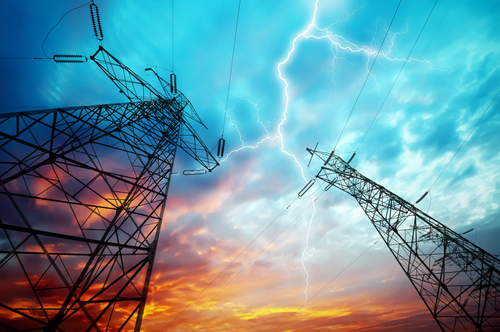EEI praises Trump’s executive order on protecting infrastructure from potential EMP attacks

U.S. investor-owned electric companies applauded President Donald Trump’s signing of an executive order on Tuesday that called on federal agencies to protect the United States from potential electromagnetic pulses (EMP) that may harm critical infrastructure systems, including the nation’s electric grid.
Trump has ordered agencies to develop ways to strengthen the nation’s resilience to the effects of EMPs, which result in a sudden burst of electromagnetic radiation that can damage technology.
“Human-made or naturally occurring EMPs can affect large geographic areas, disrupting elements critical to the nation’s security and economic prosperity, and could adversely affect global commerce and stability,” said Trump’s executive order on Coordinating National Resilience to Electromagnetic Pulses.
The Edison Electric Institute, which represents all U.S. investor-owned electric companies, said it looked forward to working with the administration to protect the energy grid.
“Grid security is a shared responsibility and addressing dynamic threats to the energy grid requires vigilance and coordination that leverages government and industry resources,” said Scott Aaronson, EEI vice president for Security and Preparedness, in a statement.
The electric power sector coordinates with the federal government through the Electricity Subsector Coordinating Council (ESCC) to defend and protect against all threats to the energy grid.
“From electric company CEOs to energy grid operators, we work closely to share threat information and partner with all levels of government to mitigate, and respond to, national-level incidents or threats to electric-sector critical infrastructure,” Aaronson said.
Federal agencies called on in the executive order to protect the grid include the Departments of Homeland Security, Energy, Defense, Commerce and the Office of the Director of National Intelligence.
Homeland Security Secretary Kirstjen Nielsen is tasked with identifying U.S. systems crucial to public safety that could potentially be disrupted by EMPs. A high-altitude EMP can be human-made and occurs when a nuclear device is detonated above the earth’s surface, while a geomagnetic disturbance is a naturally occurring EMP that is the result of solar eruptions.
Secretary of Energy Rick Perry will “conduct early-stage R&D, develop pilot programs, and partner with other agencies and the private sector, as appropriate, to characterize sources of EMPs and their couplings to the electric power grid and its subcomponents, understand associated potential failure modes for the energy sector, and coordinate preparedness and mitigation measures with energy sector partners,” according to the executive order.
Aaronson, who testified at a U.S. Senate committee hearing last month on protecting the electric grid from EMP threats, said, “EEI’s member companies understand that reliable electricity and a secure energy grid are essential to the nation’s economy and our way of life.”
In order to help the power industry make informed decisions based in science when developing, testing and deploying EMP-resistant grid components, the Electric Power Research Institute (EPRI)launched a three-year research project to evaluate how EMPs could impact the energy grid. Next month EPRI will release its final report that will provide information to industry and government in order to help develop strategies to mitigate the impact of a potential EMP attack on the electric transmission system.
One federal government security expert who also offered testimony during the February Senate hearing said the executive order would strengthen the nation’s response to EMP events through increased public and private coordination and planning.
“The E.O. sends a clear message to adversaries that the United States takes the threat of EMP seriously; it identifies opportunities to coordinate and streamline federal efforts; and it will foster an environment, through strong Administration leadership, that promotes private sector innovation to strengthen America’s critical infrastructure,” said Brian M. Harrell, Assistant Director for Infrastructure Security at the U.S. Cybersecurity and Infrastructure Security Agency.
Harrell added that the president’s action also seeks to improve information sharing between federal and non-federal stakeholders.
